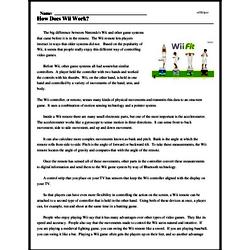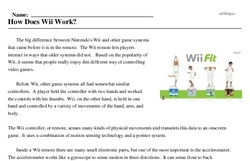How Does Wii Work?
The big difference between Nintendo's Wii and other game systems that came before it is in the remote. The Wii remote lets players interact in ways that older systems did not. Based on the popularity of Wii, it seems that people really enjoy this different way of controlling video games.
Before Wii, other game systems all had somewhat similar controllers. A player held the controller with two hands and worked the controls with his thumbs. Wii, on the other hand, is held in one hand and controlled by a variety of movements of the hand, arm, and body.
The Wii controller, or remote, senses many kinds of physical movements and transmits this data to an onscreen game. It uses a combination of motion sensing technology and a pointer system.
Inside a Wii remote there are many small electronic parts, but one of the most important is the accelerometer. The accelerometer works like a gyroscope to sense motion in three directions. It can sense front to back movement, side to side movement, and up and down movement.
It can also calculate more complex movements known as bank and pitch. Bank is the angle at which the remote rolls from side to side. Pitch is the angle of forward or backward tilt. To take these measurements, the Wii remote locates the angle of gravity and compares that with the angle of the remote.




